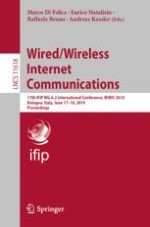This book constitutes the proceedings of the 17th IFIP WG 6.2 International Conference on Wired/Wireless Internet Communications, WWIC 2019, held in Bologna, Italy, in June 2019.
The 20 full papers presented were carefully reviewed and selected from 35 submissions. The papers address various aspects of next generation data networks, such as design and evaluation of protocols, dynamics of integration, performance tradeoffs, the need for new performance metrics, and cross-layer interactions. They are organized in the following topical sections: the Internet of Things and WLANs; security and network management; 5G and beyond 5G networks; forwarding and congestion control; and distributed applications.
